Database management is one of the essential skills that a programmer should master. In this guide, you will learn how to insert new data into a database using Python and SQL. Special attention is given to the INSERT statements, which are crucial for this task. Let’s go through the process step by step together and develop a better understanding of how these commands work.
Key insights:
- The INSERT statement allows adding new records to a table.
- Transactions are essential to ensure that all data is correctly inserted or no changes occur when an error happens.
- Using cursors is necessary to execute SQL commands and manage results.
Step-by-step guide
Step 1: Define the method for inserting
To insert data into a database, you start by defining a method for this purpose. In the context of a book database project, the method could be named “insert_book”. The necessary parameters, such as the book name and author, are passed as input values.
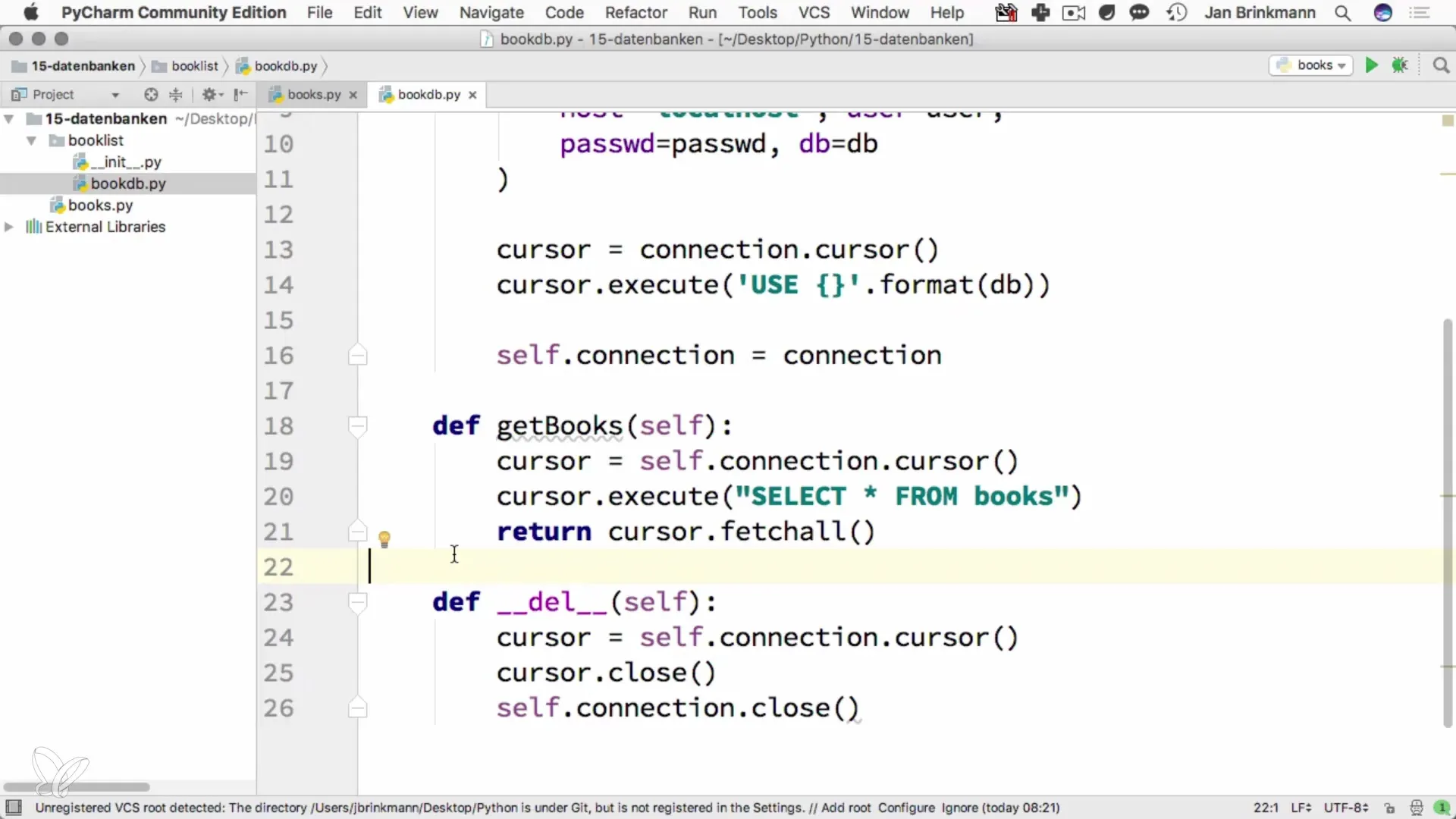
Step 2: Create the SQL statement
Before you write the actual SQL commands, define the SQL statement that specifies the structure for inserting new records.
In this statement, “books” is the table name, and “name” and “author” are the columns into which you want to insert your data. Make sure to specify the values in parentheses.
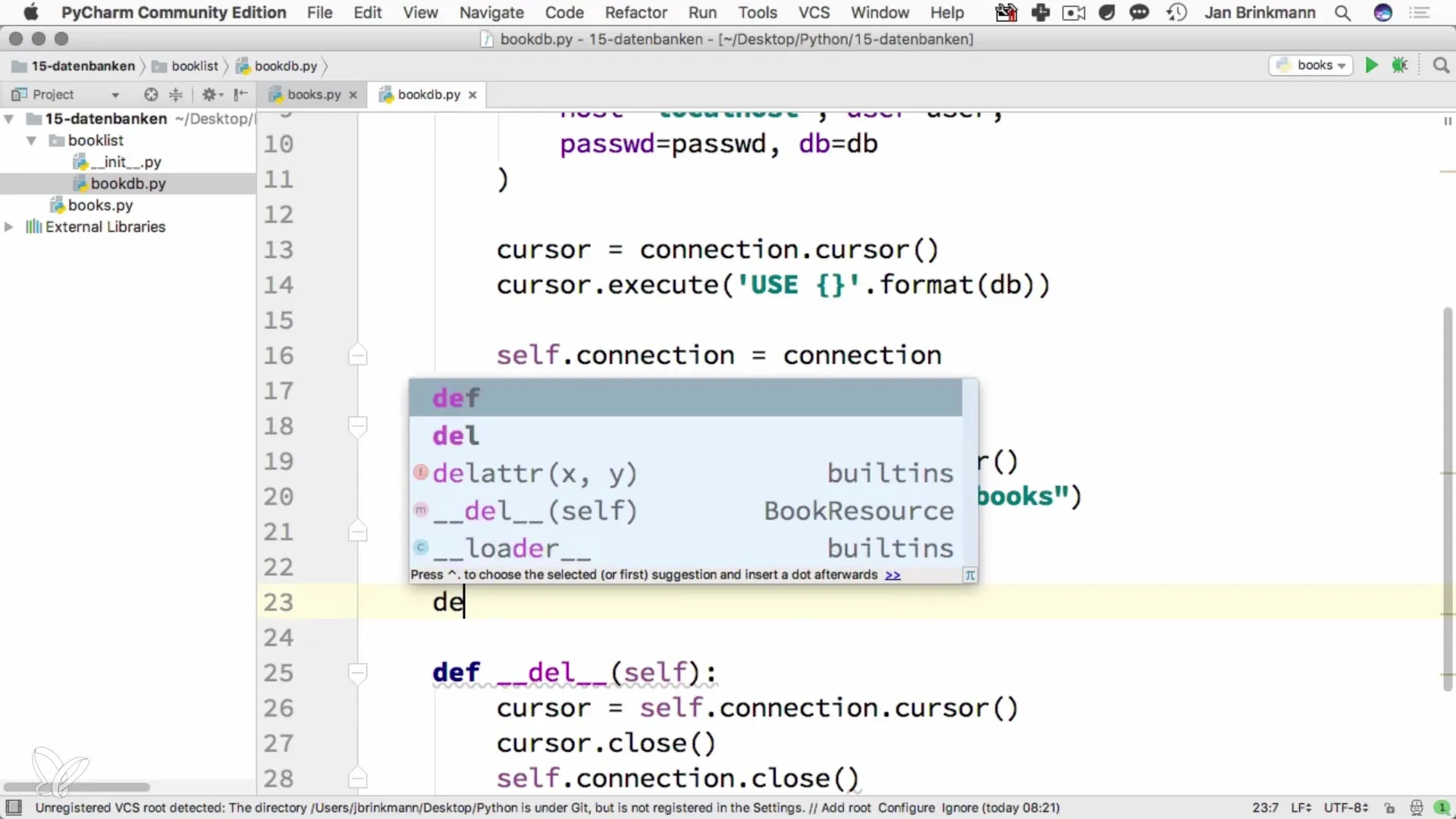
Step 3: Set up the cursor
The cursor is an important tool for executing SQL commands. It is created via the connection to the database and allows you to execute the SQL statement.
This line creates a cursor that is used for executing the commands.
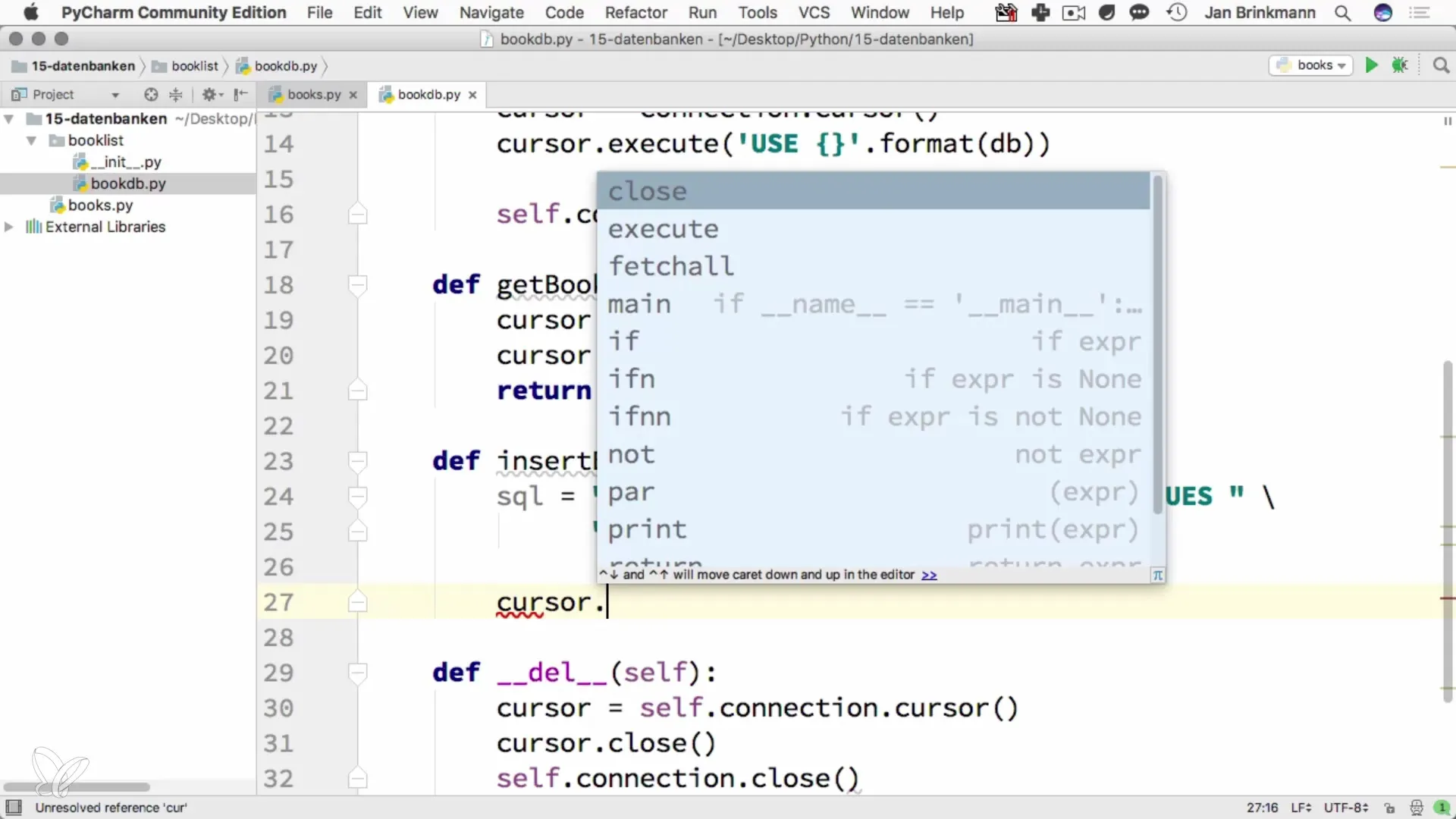
Step 4: Execute the SQL command
To actually execute the SQL statement, use the cursor with the “execute” method. This is typically done right after defining the SQL statement to ensure that the correct values are entered into the database.
Remember that this step initiates the execution of the statement, but the change is not yet finalized in the database.
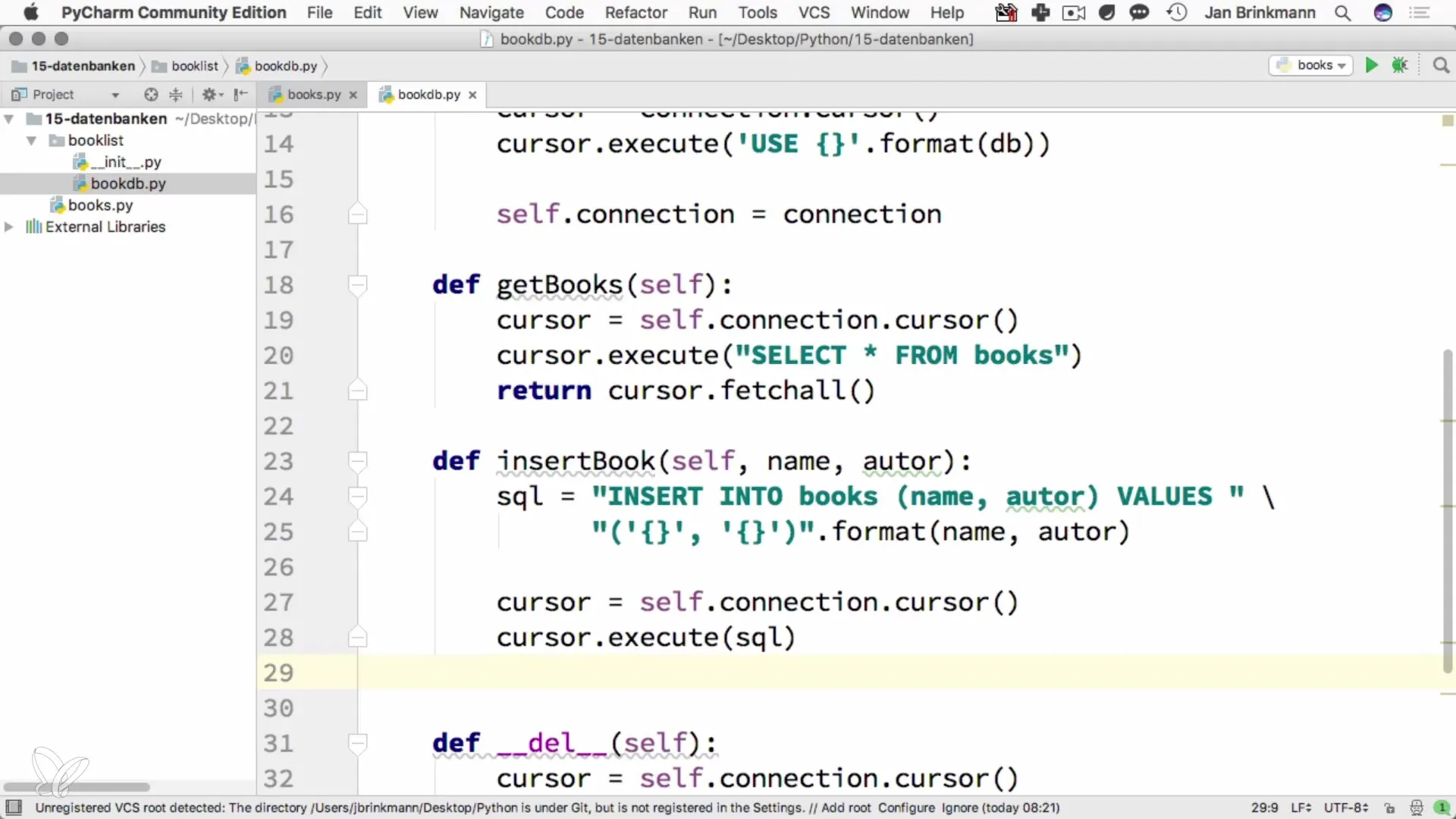
Step 5: Manage transactions
The changes you make in the database need to be managed and committed through a transaction. This is typically done with the “commit” method.
This step ensures that all changes to the database are committed. If you have multiple SQL commands within a transaction, you can commit them all at once with a “commit” statement.
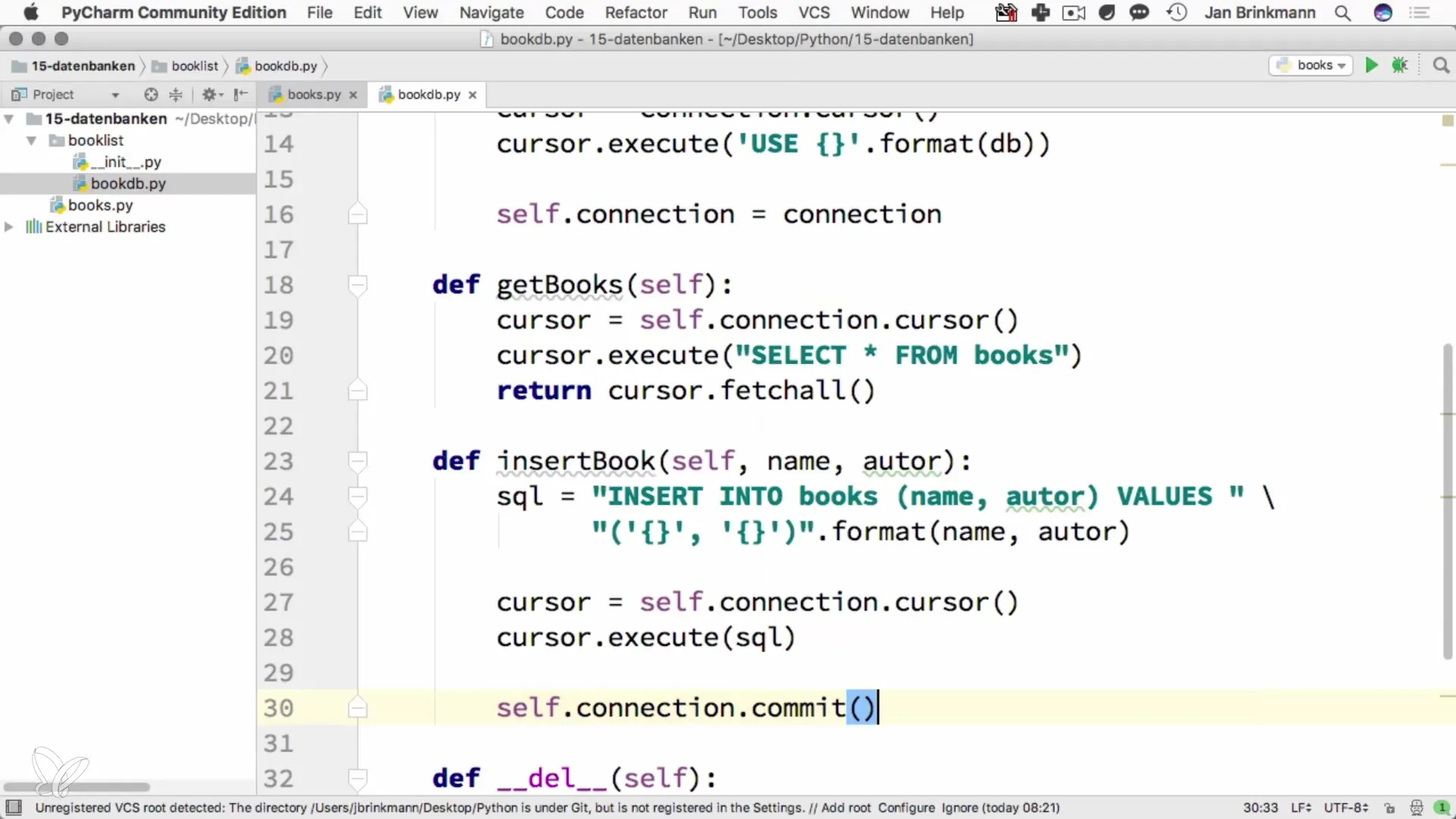
Step 6: Return the new ID
After successfully inserting a new record, you may want to retrieve the ID of the added book.
This ID is helpful to identify the new row later or to display it in an interface.
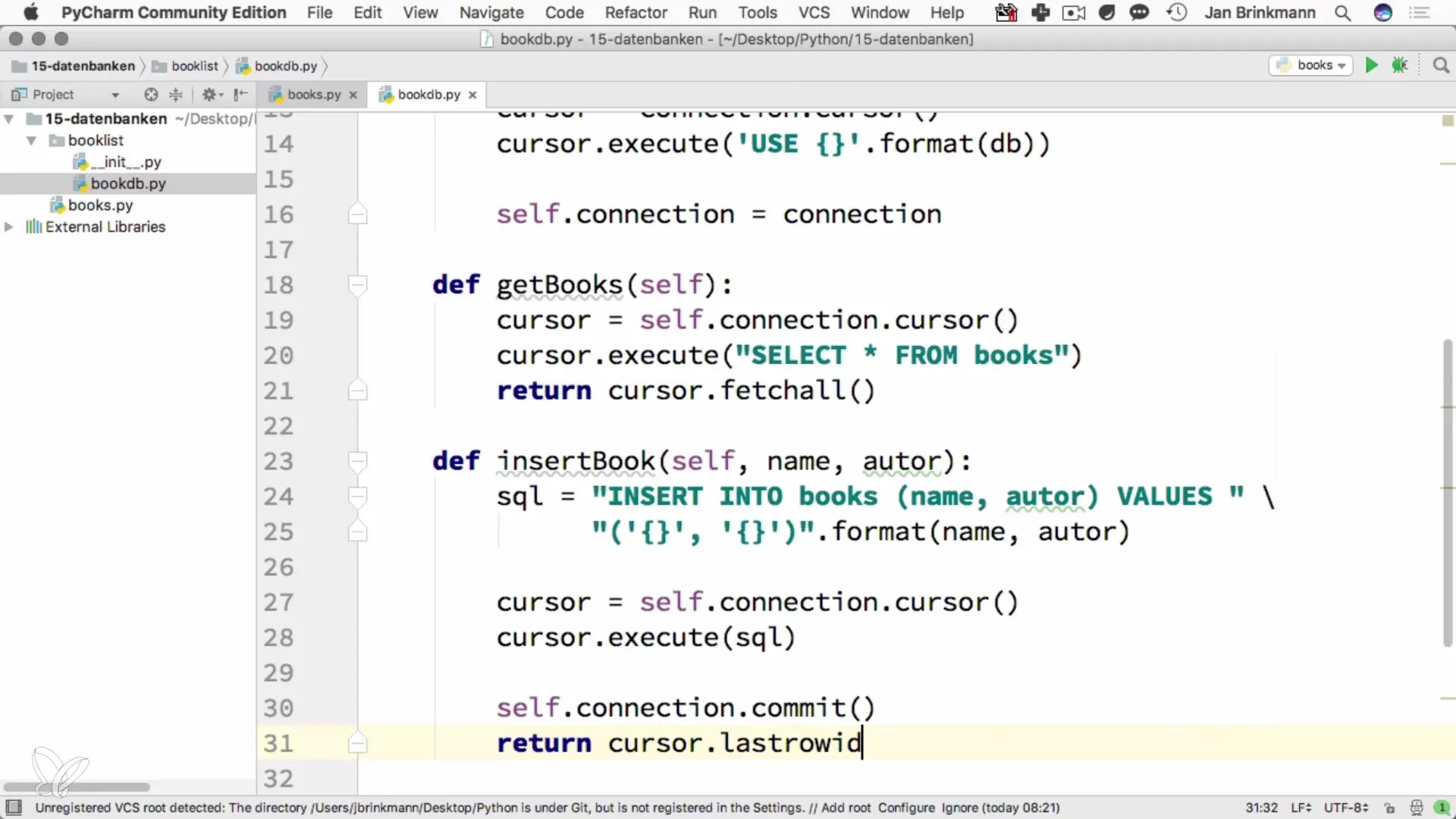
Step 7: Check results
Once the book has been successfully inserted, you can check the result to ensure everything worked correctly. You can use the ID in a format string to output it in the desired location.
This way, you inform yourself or other users that the insertion was successful.
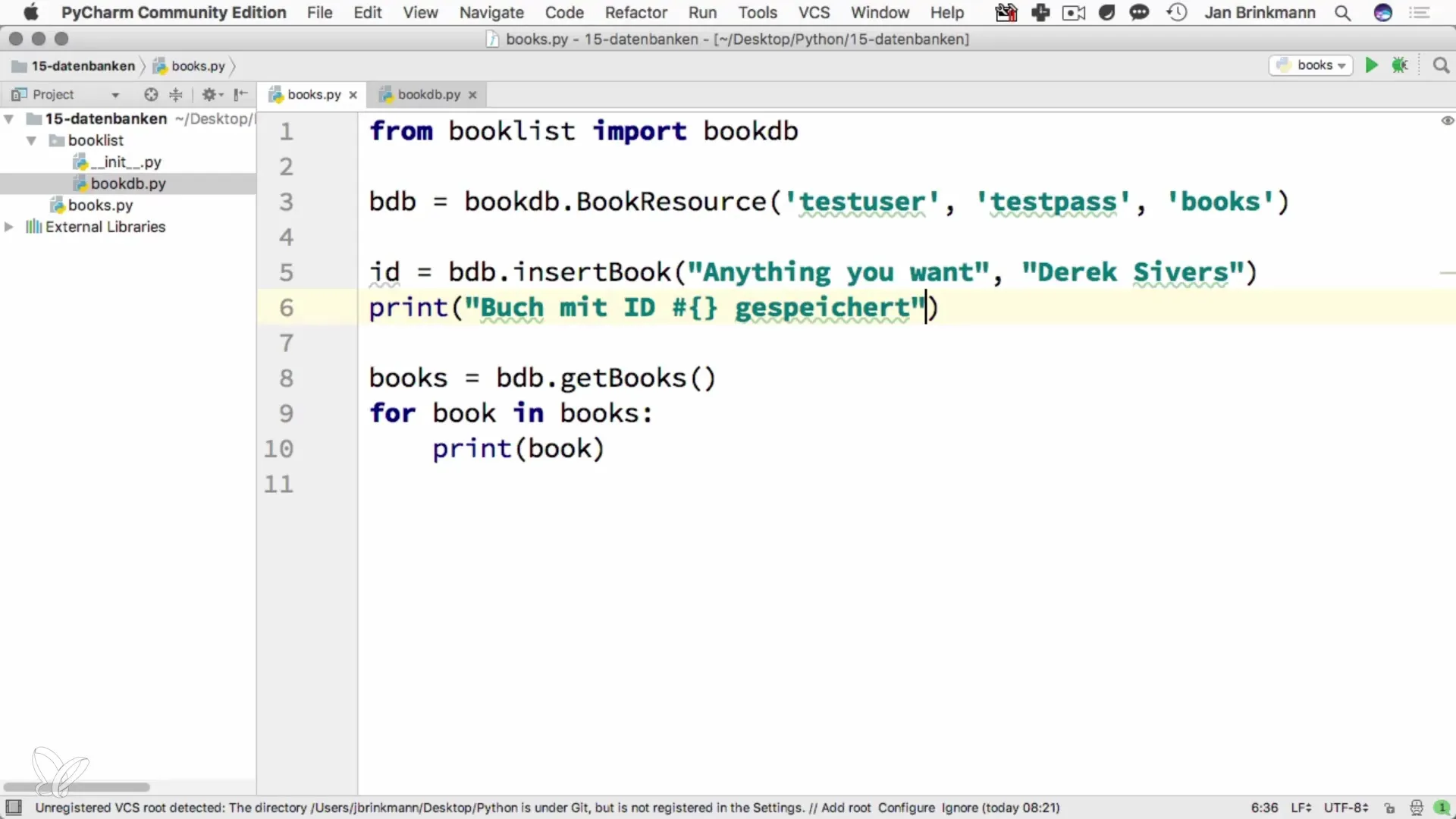
Step 8: Optionally delete records
If you would like to add the option to delete records, you can do so with a DELETE statement, which could be covered in a future video. You might consider how to handle the deletion operation to ensure the integrity of the database.
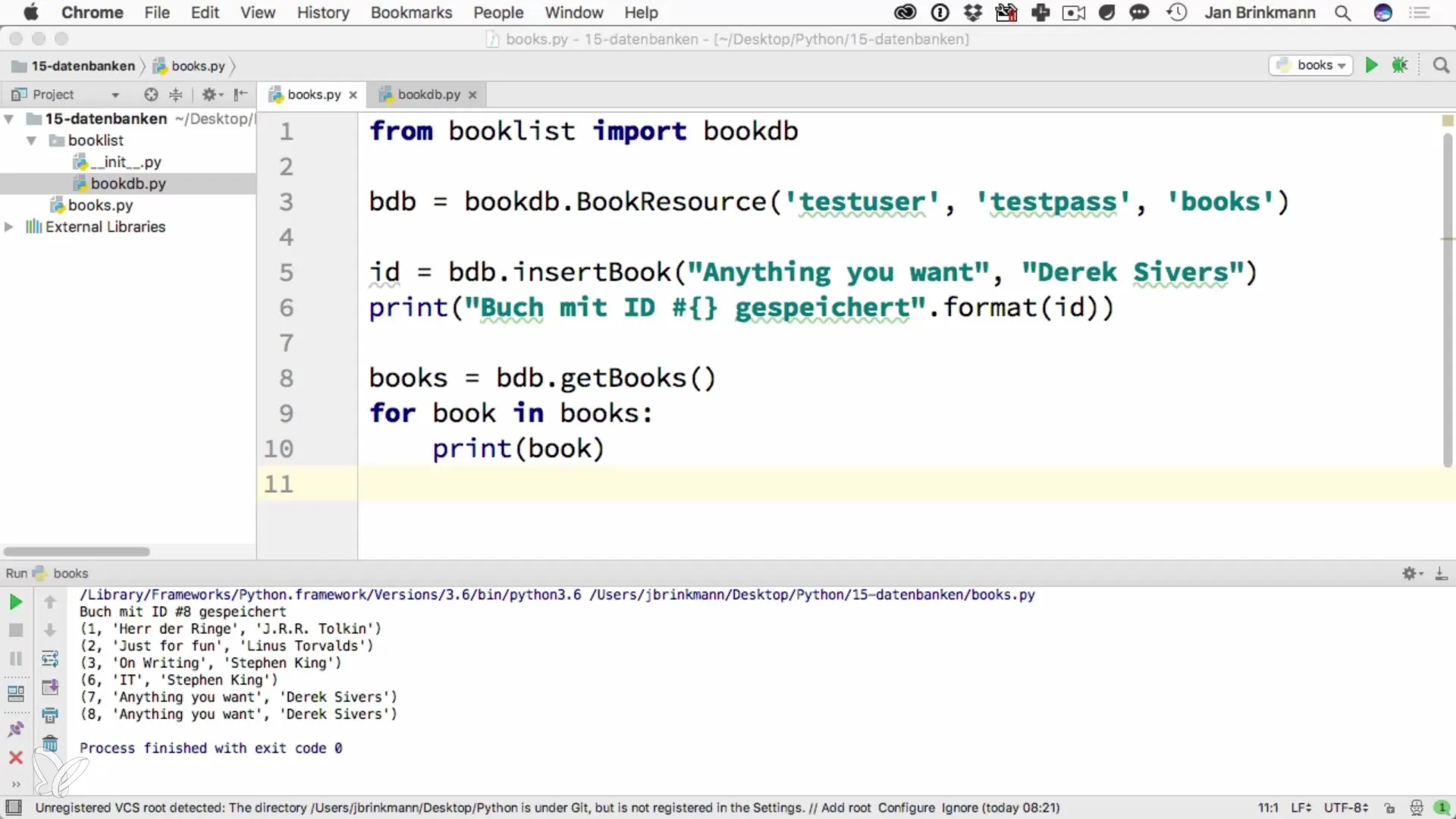
Summary – Inserting data with Python and SQL: Effectively using INSERT commands
By understanding and applying INSERT statements in conjunction with Python and SQL, you are now capable of inserting new records into your database. This process includes creating the SQL statement, using cursors, and managing transactions. With this knowledge, you are well on your way to improving your database management skills.
Frequently Asked Questions
What is an INSERT statement?An INSERT statement is an SQL command that adds new records to a table.
How do I manage transactions in SQL?Transactions are managed by using “commit” after executing the SQL commands.
What do I do if the insertion fails?If an error occurs, you can roll back all changes by not committing the transaction.
How do I get the ID of the inserted record?The ID of the last inserted record can be retrieved using cursor.lastrowid.


